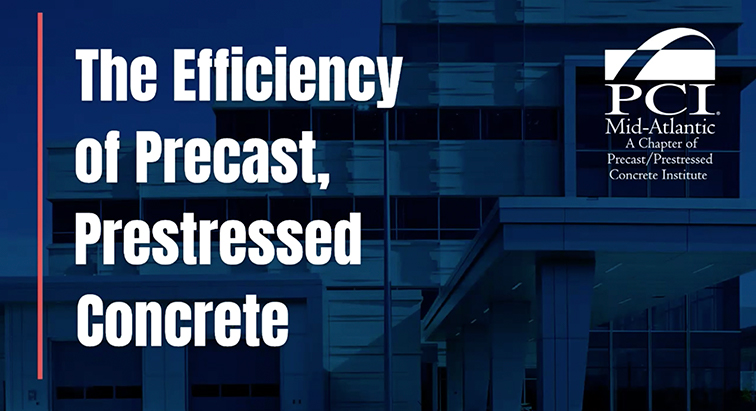Precast, prestressed concrete is one of the most efficient building materials available today. If you’re not familiar with the term, plant-manufactured precast concrete refers to concrete that’s manufactured off-site in a quality-controlled facility and then transported to the final location where it will be erected or placed.
Precast concrete is used as an architectural material for building envelopes and other applications, as well as a structural system for buildings, parking structures, and bridges. It’s a versatile, high-performance material that easily integrates with other systems and provides a wide variety of benefits, including increased efficiency in several key areas.
We’ll explore what makes precast, prestressed concrete an efficient building material, so you can determine if it’s right for your next project. To learn more about the efficiency of precast, prestressed concrete, watch the video below.
Construction Speed
Precast concrete components can be manufactured year-round in all weather conditions, increasing construction speed and making a more efficient use of plant and labor personnel than other building materials.
If you take a look at any precast concrete production facility, you’ll also see an ongoing effort to avoid inefficiencies, redundancies, and waste. Precast producers work with lean manufacturing principles to optimize things like bed length, strand usage, and raw materials, optimizing the construction process even further.
Job Site Safety
Since precast concrete is produced in an off-site facility and in controlled environments, it limits the number of people required on job sites, increasing safety. And because precast concrete can be produced year-round, it also keeps laborers and crews safe from inclement weather and the hazards that come with it. Because of these benefits, precast concrete components and designs are safer to produce and erect than those made from other materials.
Precast job sites have fewer cars, people, and equipment, which reduces the overall risk of injury, OSHA violations, and other disruptions for all teams involved.
Reduced Complexity
Building facades are often composed of different materials that all have varying degrees of expansion and contraction. With different materials and varying characteristics, construction can be a complex and difficult process.
Precast concrete, however, can combine features like insulation, continuous air barriers, and vapor barriers efficiently into one panel instead of requiring multiple panels for each. This can reduce construction complexity and decrease the risk of improper installation.
Energy Efficiency
Compared to other building materials, precast concrete has a higher thermal mass. Sandwich wall panels made from precast can even delay or reduce peak HVAC loads, further increasing energy efficiency and occupant comfort.
Learn More About Precast, Prestressed Concrete
Review the benefits of precast, prestressed concrete in the video above and share it with your industry peers and clients to spread awareness of this innovative material.
Interested in learning more about precast and how the precasters of the PCI Mid-Atlantic Chapter support projects of all kinds? Explore the PCI Mid-Atlantic Solutions Center for helpful resources and get in touch with PCI-MA for precast information, higher education partnerships, and more.





